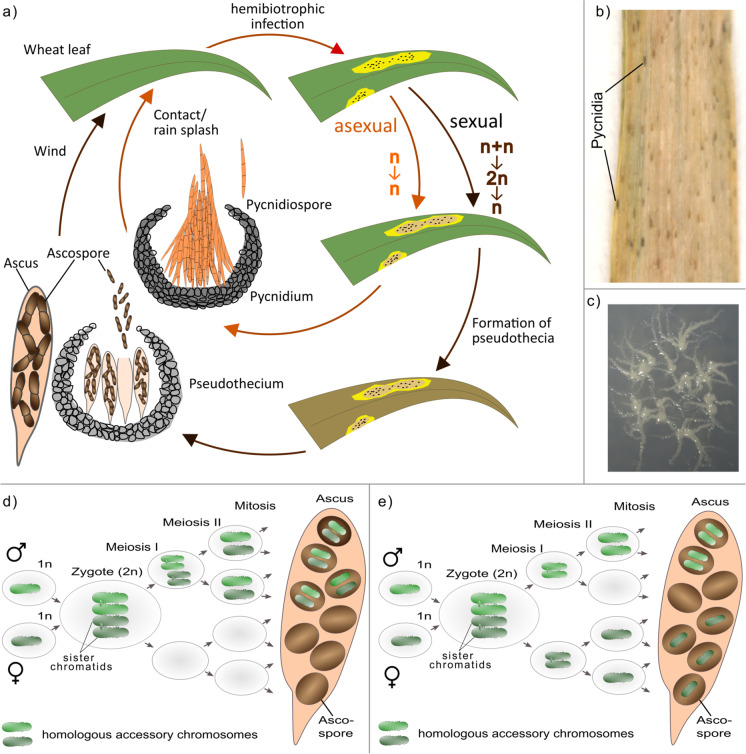Fig. 1.
a Life cycle of Z. tritici as an example of an Ascomycete life cycle containing both asexual and sexual reproduction. Asexual reproduction results in pycnidiospores (asexual haploid spores), produced by asexual fruiting body (pycnidia) in infected wheat leaves (adapted from Ponomarenko 2011). The asexual cycle is assumed to only contain haploid cells. Sexual reproduction in Z. tritici results in ascospores (sexual haploid spores) produced in the sexual fruiting body (pseudothecium). Here, two specialized haploid cells fuse to form a diploid zygote which undergoes two meiotic cell divisions and one mitotic cell division to produce eight haploid ascospores contained in a sac-like structure (ascus). b Example pictures of asexual fruiting body (pycnidia) formed by Z. tritici on necrotic leaf tissue lesion carrying asexual pycnidiospores on a wheat leaf infected with Z. tritici. c Example picture of in vitro growth of Z. tritici growing on xylose minimum medium. d–e Models for losses and disomies of fungal accessory chromosomes due to nondisjunction of d homologous chromosomes or e sister chromatids during meiotic cell divisions. d Homologous accessory chromosomes fail to segregate at first meiotic division which leads to their disomy in half of the progeny and the absence of respective homologous accessory chromosomes in the remaining half of ascospores. e Nondisjunction of sister chromatids during the second meiotic division causes loss and disomy of accessory chromosomes. In contrast to disomic progeny from d, disomic accessory chromosomes are identical and chromosomes are absent in 25% of the progeny. For the sake of clarity, no recombination events are depicted

